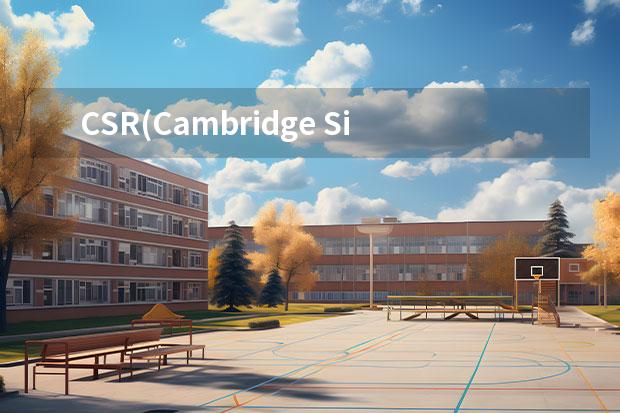2023年9月28日雅思阅读考试真题及答案 2023年5月24日雅思阅读真题回忆以及解析很多朋友对这方面很关心,金博宝188官网整理了相关文章,供大家参考,一起来看一下吧!
本文目录一览:

2023年9月28日雅思阅读考试真题及答案
您好,我是专注留学考试规划和留学咨询的小钟老师。在追寻留学梦想的路上,选择合适的学校和专业,准备相关考试,都可能让人感到迷茫和困扰。作为一名有经验的留学顾问,我在此为您提供全方位的专业咨询和指导。欢迎随时提问!昨天刚刚结束了最新一期的雅思考试,大家有没有被难倒呢?接下来就跟着小钟老师来看一看2023年9月28日雅思阅读考试真题及答案。
Passage1: 希腊硬币Greek coinage
参考答案:
1. 希腊coin早在3000年就出现了=F
2. T
3. Sparta地区侵略Athens并强制Athens用他们的货币=F
4. Great coins在整个欧洲流传=F
5. Persian 入侵了Lydia并且使用人家的硬币=T
6. 用硬币上的头像来奖励做出杰出贡献的人=NG
7. mint
8. stamps
9. anvil
10. reserve dies
11. 希腊硬币的重量至少=0.15g
12. 硬币的图案=the king的头像
13. 希腊被波斯征服之前的花纹是lion and doil
14. coin 在雅典被称为 owl
Passage2: 悉尼交通标识Street markers in Sydney
Passage3: Musical Maladies
参考答案:
A. Music and the brain are both endlessly fascinating subjects, and as a neuroscientist specializing in auditory learning and memory, I find them especially intriguing. So I had high expectations of Musicophilia, the latest offering from neurologist and prolific author Oliver Sacks. And I confess to feeling a little guilty reporting that my reactions to the book are mixed.
B. Sacks himself is the best part of Musicophilia. He richly documents his own life in the book and reveals highly personal experiences. The photograph of him>C. The preface gives a good idea of what the book will deliver. In it Sacks explains that he wants to convey the insights gleaned from the enormous and rapidly growing body of work>complex and often bizarre disorders to which these are prone." He also stresses the importance of the simple art of observation" and the richness of the human context. He wants to combine observation and description with the latest in technology,” he says, and to imaginatively enter into the experience of his patients and subjects. The reader can see that Sacks, who has been practicing neurology for 40 years, is torn between the old-fashioned path of observation and the new-fangled, high-tech approach: He knows that he needs to take heed of the latter, but his heart lies with the former.
D. The book consists mainly of detailed descriptions of cases, most of them involving patients whom Sacks has seen in his practice. Brief discussions of contemporary neuroscientific reports are sprinkled liberally throughout the text. Part I, Haunted by Music," begins with the strange case of Tony Cicoria, a nonmusical, middle-aged surgeon who was consumed by a love of music after being hit by lightning. He suddenly began to crave listening to piano music, which he had never cared for in the past. He started to play the piano and then to compose music, which arose spontaneously in his mind in a torrent of notes. How could this happen? Was I the cause psychological? (He had had a near-death experience when the lightning struck him.) Or was it the direct result of a change in the auditory regions of his cerebral cortex? Electro-encephalography (EEG) showed his brain waves to be normal in the mid-1990s, just after his trauma and subsequent conversion to music. There are now more sensitive tests, but Cicoria has declined to undergo them; he does not want to delve into the causes of his musicality. What a shame!
E. Part II, “A Range of Musicality,” covers a wider variety of topics,but unfortunately, some of the chapters offer little or nothing that is new. For example, chapter 13, which is five pages long, merely notes that the blind often have better hearing than the sighted. The most interesting chapters are those that present the strangest cases. Chapter 8 is about “ amusia, ” an inability to hear sounds as music, and “dysharmonia,”a highly specific impairment of the ability to hear harmony, with the ability to understand melody left intact. Such specific dissociations are found throughout the cases Sacks recounts.
F. To Sacks's credit, part III, "Memory, Movement and Music," brings us into the underappreciated realm of music therapy. Chapter 16 explains how "melodic intonation therapy" is being used to help expressive aphasic patients (those unable to express their thoughts verbally following a stroke or other cerebral incident)>G. To readers who are unfamiliar with neuroscience and music behavior, Musicophilia may be something of a revelation. But the book will not satisfy those seeking the causes and implications of the phenomena Sacks describes. For>appears to be more at ease discussing patients than discussing experiments. And he tends to be rather uncritical in accepting scientific findings and theories.
H. It's true that the causes of music-brain oddities remain poorly understood. However, Sacks could have done more to draw out some of the implications of the careful observations that he and other neurologists have made and of the treatments that have been successful. For example, he might have noted that the many specific dissociations among components of music comprehension, such as loss of the ability to perceive harmony but not melody, indicate that there is no music center in the brain. Because many people who read the book are likely to believe in the brain localization of all mental functions, this was a missed educational opportunity.
I. Another conclusion>patient. Treatments mentioned seem to be almost exclusively antiepileptic medications, which "damp down" the excitability of the brain in general; their effectiveness varies widely.
J. Finally, in many of the cases described here the patient with music-brain symptoms is reported to have "normal" EEG results. Although Sacks recognizes the existence of new technologies, among them far more sensitive ways to analyze brain waves than the standard neurological EEG test, he does not call for their use. In fact, although he exhibits the greatest compassion for patients, he conveys no sense of urgency about the pursuit of new avenues in the diagnosis and treatment of music-brain disorders. This absence echoes the book's preface, in which Sacks expresses fear that the simple art of observation may be lost" if we rely too much on new technologies. He does call for both approaches, though, and we can only hope that the neurological community will respond.
27-30:B C A A
31-36:YES NG NO NG YES NO
37-40:F B A D
希望以上的答复能对您的留学申请有所帮助。如果您有任何更详细的问题或需要进一步的协助,我强烈推荐您访问我们的留学官方网站 ,在那里您可以找到更多专业的留学考试规划和留学资料以及一对一的咨询服务。祝您留学申请顺利!
2023年10月19日雅思阅读考试真题及答案
您好,我是专注留学考试规划和留学咨询的小钟老师。在追寻留学梦想的路上,选择合适的学校和专业,准备相关考试,都可能让人感到迷茫和困扰。作为一名有经验的留学顾问,我在此为您提供全方位的专业咨询和指导。欢迎随时提问!上周末完成的雅思考试,相信大家都对真题和答案很感兴趣,那么今天就来和小钟老师一起来看看2023年10月19日雅思阅读考试真题及答案。
Section1
青春期能力发展(重复19年4月13日第一篇文章,考试文章和部分题目稍有改动,真题仅供参考)
Section2
蜜蜂对于生态的重要性
Section3
可以参考:历史教学新方法 New Ways of Teaching History
New Ways of Teaching History
In a technology and media-driven world, it's becoming increasinglydifficult to get our students’attentions andkeep them absorbed in classroom discussions. This generation, in particular,has brought a unique set of challenges to the educational table. Whereas youthare easily enraptured by high-definition television, computers, iPods, videogames and cell phones, they are less than enthralled by what to them areobsolete textbooks and boring classroom lectures. The question of how to teachhistory in a digital age is often contentious. On the one side, the old guardthinks the professional standards history is in mortal danger fromflash-in-the-pan challenges by the distal that are all show and no the other Side, the self-styled“disruptors”offer over-blown rhetoric about how digital technology has changedeverything while the moribund profession obstructs all progress in the name ofoutdated ideals. At least, that's a parody (maybe not much of one) of how thedebate proceeds. Both supporters and opponents of the digital share moredisciplinary common ground than either admits.
When provided with merely a textbook as a supplemental learning tool, testresults have revealed that most students fail to pinpoint the significance ofhistorical events and individuals. Fewer still are able to cite andsubstantiate primary historical sources. What does this say about the way oureducators are presenting information? The quotation comes from a report of a1917 test of 668 Texas students. Less than 10 percent of school-age childrenattended high school in 1917; today, enrollments are nearly universal. Thewhole world has turned on its head during the last century but one thing hasstayed the same: Young people remain woefully ignorant about history reflectedfrom their history tests. Guess what? Historians are ignorant too, especiallywhen we equate historical knowledge with the "Jeopardy" Daily a test, those specializing in American history did just fine. But those withspecialties in medieval, European and African history failed miserably whenconfronted by items about Fort Ticonderoga, the Olive Branch Petition, or theQuebec Act—all taken from a typical textbook. According to thetesters, the results from the recent National Assessment in History, likescores from earlier tests, show that young people are "abysmallyignorant" of their own history. Invoking the tragedy of last September,historian Diane Ravitch hitched her worries about our future to the idea thatour nation's strength is endangered by youth who do poorly on such tests. Butif she were correct, we could have gone down the tubes in 1917!
There is a huge difference between saying "Kids don’t know the history we want then to know" and saying "Kids don'tknow history at all." Historical knowledge burrows itself into ourcultural pores even if young people can't marshal it when faced by a multiplechoice test. If we weren’t such hypocrites(or maybe if we were better historians) we'd have to admit that today'sstudents follow in our own footsteps. For too long we've fantasized that byrewriting textbooks we could change how history is learned. The problem,however, is not the content of textbooks but the very idea of them. No humanmind could retain the information crammed into these books in 1917, and it cando no better now. If we have learned anything from history that can be appliedto every time period, it is that the only constant is change. The teaching ofhistory, or any subject for that matter, is no exception. The question is nolonger whether to bring new technologies into everyday education; now, thequestion is which There is a huge difference between saying "Kids don’t know the history we want then to know" and saying "Kids don'tknow history at all." Historical knowledge burrows itself into ourcultural pores even if young people can't marshal it when faced by a multiplechoice test. If we weren’t such hypocrites(or maybe if we were better historians) we'd have to admit that today'sstudents follow in our own footsteps. For too long we've fantasized that byrewriting textbooks we could change how history is learned. The problem,however, is not the content of textbooks but the very idea of them. No humanmind could retain the information crammed into these books in 1917, and it cando no better now. If we have learned anything from history that can be appliedto every time period, it is that the only constant is change. The teaching ofhistory, or any subject for that matter, is no exception. The question is nolonger whether to bring new technologies into everyday education; now, thequestion is which technologies are most suitable for the range of topicscovered in junior high and high school history classrooms. Fortunately,technology has provided us with opportunities to present our Civil War lessonplans or our American Revolution lesson plans in a variety of new ways.
Teachers can easily target and engage the learners of this generation byeffectively combining the study of history with innovative multimedia- PowerPointand presentations in particular can expand the scope of traditional classroomdiscussion by helping teachers to explain abstract concepts while accommodatingstudents* unique learning styles. PowerPoint study units that have beenpre-made for history classrooms include all manner of photos, prints, maps,audio clips, video clips and primary sources which help to make learninginteractive and stimulating. Presenting lessons in these enticing formats helpstechnology-driven students retain the historical information they'll need toknow for standard exams.
Whether you are covering Revolutionary War lesson plans or World War IIlesson plans, PowerPoint study units are available in formats to suit the needsof your classroom. Multimedia teaching instruments like PowerPoint software aregetting positive results the world over, framing conventional lectures withcaptivating written, auditory and visual content that helps students recallnames, dates and causal relationships within a historical context.
History continues to show us that new times bring new realities. Educationis no exception to the rule. The question is not whether to bring technologyinto the educational environment. Rather, the question is which technologiesare suitable for U.S. and world history subjects, from Civil War lesson plansto World War II lesson plans. Whether you’re covering your American Revolution lesson plans or your Cold War lessonplans, PowerPoint presentations are available in pre-packaged formats to suityour classroom's needs.
Meanwhile, some academic historians hold a different view on the use oftechnology in teaching history. One reason they hold is that not all facts canbe recorded by film or videos and literature is relatively feasible in thiscase her challenge they have to be faced with is the painful process tolearn new technology like the making of PowerPoint and the editing of audio andvideo clips which is also reasonable especially to some elderly historians.
Question
Reading this passage has eight paragraphs, A- G
Choosing the correct heading for paragraphs A- G from the list of headingbelow
Write the appropriate number, i- x, in boxes 28-34 on your answer sheet
List of Headings
i unavoidable changing facts to be considered when picking up technologymeans
ii A debatable place where the new technologies stand in for historyteaching
iii Hard to attract students in traditional ways of teaching history
iv Display of the use of emerging multimedia as leaching tools
v Both students and professionals as candidates did not produce decentresults
vi A good concrete example illustrated to show how multimedia animates thehistory class
vii The comparisons of the new technologies applied in history class
viii Enormous breakthroughs in new technologies
ix Resistance of using new technologies from certain historian
x Decisions needed on which technique to be used for history teachinginstead of improvement in the textbooks
28 Paragraph A
29 Paragraph B
30 Paragraph C
31 Paragraph D
32 Paragraph E
33 Paragraph F
34 Paragraph G
Question 35-37
Do the following statements agree with the information given in ReadingPassage?
In boxes 35-37 on your answer sheet, write
YES if the statement is true
NO if the statement is false
NOT GIVEN if the information is not given in the passage
35 Modem people are belter at memorizing historical information comparedwith their ancestors.
36 New technologies applied in history- teaching are more vivid forstudents to memorize the details of historical events.
37 Conventional ways like literature arc gradually out of fashion as timegoes by.
Question 38-40
Complete the following summary of the paragraphs of Reading Passage, usingmore than three words from the Reading Passage for each answer.
Write your answers in boxes 38-40 on your answer sheet.
Contemporary students can be aimed at without many difficulties byintegrating studying history with novel. ..38.... Conventional classroomdiscussion is specially extended by two ways to assist the teachers tointerpret ...39... and at the same time retain students' distinct learningmodes. PowerPoint study units prepared beforehand comprising a wide variety ofelements make ...40.... learning feasible. Combined classes like this can alsobe helpful in taking required tests.
希望以上的答复能对您的留学申请有所帮助。如果您有任何更详细的问题或需要进一步的协助,我强烈推荐您访问我们的留学官方网站 ,在那里您可以找到更多专业的留学考试规划和留学资料以及一对一的咨询服务。祝您留学申请顺利!
2023年5月24日雅思阅读真题回忆以及解析
您好,我是专注留学考试规划和留学咨询的小钟老师。在追寻留学梦想的路上,选择合适的学校和专业,准备相关考试,都可能让人感到迷茫和困扰。作为一名有经验的留学顾问,我在此为您提供全方位的专业咨询和指导。欢迎随时提问!2023年5月24日的雅思考试终于结束了,那么不知道同学对于此次考试感觉怎么样呢?下面就和小钟老师一起来看看2023年5月24日雅思阅读真题回忆以及解析。
一、考试概述:
今年阅读的新题很多,涉及不同的方面。今天考试的三篇文章涉及了不同的层面,既有人文科学,也有社会科学,需要考生们有扎实的语言功底和正确的做题习惯。幸运的是,今天的阅读出现了一篇旧题,之前就刷过这些题目的考生,这次会感觉很友好。
二、具体题目分析
Passage 1:
题目:Viking ship and its replica土质研究
题型:7判断题+6简答题
题号:旧题
文章大意:待补充
参考答案:待补充
参考文章:暂无
Passage 2:
题目: Tasmania Tiger塔斯马尼亚虎
题型:无选项摘要题+人物名称配对题+单选题
题号:旧题
文章大意:暂无
参考答案:
14-17) 无选项摘要题
14. Black stripes.
15. 12 million.
16. Australia.
17. European。
18-22) 人物名称配对题
18. A。
19. D。
20. C。
21. B。
22. A。
23. D。
24-26) 单选题
24. B。
25. D。
26. A。
(答案仅供参考)
参考文章:
Tasmanian Tiger
塔斯马尼亚虎
Although it was called tiger, it looked like a dog with black stripes on its back and it was the largest known carnivorous marsupial of modem times. Yet, despite its fame for being one of the most fabled animals in the world, it is one of the least understood of Tasmania's native animals. The scientific name for the Tasmanian tiger is Thylacine and it is believed that they have become extinct in the 20th century.
Fossils of thylacines dating from about almost 12 million years ago have been dug up at various places in Victoria, South Austnilia and Western Australia. They were widespread in Australia 7000 years ago, but have probably been extinct on the continent for 2000 years. This is believed to he because of the introduction of dingoes around 8000 years ago. Because of disease, thylacine numbers may have been declining in Tasmania at the time of European settlement 200 years ago, but the decline was certainly accelerated by the new arrivals. The last known Tasmanian Tiger died in Hobart Zoo in 1936 and the animal is officially dassilied jis extinct. Technically, this means that it has not been officially sighted in the wild or captivity for 50 years. However, there are still unsubstantiated sightings.
Hans Naarding, whose study of animal had taken him around the world, was conducting a survey of a species of endangered migratory, bird. What he saw that night is now regarded as the most credible sighting recorded of thylacine that many believe has been extinct for more than 70 years.
"I had to work at night",Naarding Uikes up the story. "I was in the habit of inlermittently shining a spotliglit around. The beam fell on an animal in front of the vehicle, less than 10m away. Instead of risking movement by grabbing for a camera, I decided to register very carefully what I was seeing. The animal was about the size of a small shepherd dog, a very healthy male in prime condition. What set it apart from a dog, though, was a slightly sloping hindquarten with a fairly thick tail being a straight continuation of the backline of the animal. It had 12 distinct stripes on its hack, continuing onto its butt. I knew perfectly well what I was seeing. As soon as I reached for the camera, it disappeared into the tea-tree underprowth and scrub."
The director of Tasmania's National parks at the time, Peter Morrow, decided in his wisdom to keep Naarding's sighting of the thylacine secret for two years. When the news finally broke, it was accompanied by pandemonium. I was besieged by television crews, including four to five from Japan, and otliers from the United Kingdom, Germany, New Zealand and South Ainerica,w said Naarding.
Government and private search parties combed the region, but no further sightings were made. The tiger, as always, had escaped to its lair, a place many insist exists only in our imagination. But since then, the thylacine has staged something of a comeback, becoming part of Australian mythology.
There have been more than 4,000 claimed sightings of the beast since it supposedly died out, and the average claims each year reported to authorities now number 150. Associate professor of zoology at the University of Tasmania, Randolph Rose, has said he dreams of seeing a thylacine. But Rose, who in his 35 years in Tasmanian academia has fielded countless reports of thylacine sightings, is now convinced that his dream will go unfulfilled.
"The consensus among conservationists is that, usually, any animal with a population base of less than 1,000 is headed for extinction within 60 years,” says Rose. “Sixty years ago, there was only one thylacine that we know of, and that was in Hobart Zoo,he says.
Dr. David Pemberton, curator of zoology at the Tasmanian Museum and Art Gallery, whose PhD thesis was on the thylacine, says that despite scientific thinking that 500 animals are required to sustain a population, the Florida panther is down to a dozen or so animals and, while it does have some inbreeding problems, is still ticking along. Mril take a punt and say that, if we manage to find a thylacine in the scrub, it means that there are 50-plus animals out there.
After all, animals can be notoriously elusive. The strange fish known as the coelacanth, with its "proto-legs", was thought to have died out along with the dinosaurs 700 million years ago until a specimen was dragged to the surface in a shark net off the south-east coast of South Africa in 1938.
Wildlife biologist Nick Mooney has the unenviable task of investigating all wsightingsw of llie tiger totalling 4,000 since the mid-1930s, and averaging about 150 a year. It was Mooney who was first consulted late last month about the authenticity of digital photographic images purportedly taken by a German tourist while on a recent bushwalk in the state. On face value, Mooney says, the account of the sighting, and the two photographs submitted as proof, amount to one of the most convincing cases for the species' survival he has seen.
And Mooney has seen it all—the mistakes, the hoaxes, the illusions and the plausible accounts of sightings. Hoaxers aside, most people who report sightings end up believing they have seen a thylaeine, and are themselves believable to the point they could pass a lie-detector test, according to Mooney. Otliers, having tabled a creditable report, then become utterly obsessed like the Tasmanian who has registered 99 thylacine sightings to date. Mooney has seen individuals bankrupted by the obsession, and families destroyed. "It is a blind optimism tliat something is, rather than a cynicism that something isn’t,” Mooney says. “If something crosses the road, it’s not a case of ‘I wonder what tliat was?* Rather, it is a case of 'that's a thylacine!' It is a bit like a gold prospector's blind faith, "it has got to be there".
However, Mooney treats all reports on face value. I never try to embarrass people, or make fools of them. But the fact that I don't pack the car immediately they ring can often be taken as ridicule. Obsessive characters get irate tliat someone in my position is not out there when they think the thylacine is there."
But Hans Naarding, whose sighting of a striped animal two decades ago was the highlight of Ma life of animal spotting", remains bemused by the time and money people waste on tiger searches. He says resources would be better applied to saving the Tasmanian devil, and helping migratory bird populations that are declining as a result of shrinking wetlands across Australia.
Could the thylacine still be out there? MSure,w Naarding says. But he also says any discovery of surviving thylacines would be Mrather pointless". MHow do you save a species from extinction? What could you do with it? If there are thylacines out there, they are better off right where they are."
Questions 14-17
Complete the summary below.
Choose NO MORE THAN TWO WORDS from the passage for each answer.
Write your answers in boxes 14-17 on your answer sheet.
The Tasmanian tiger, also called thylacine, resembles the look of a dog and has 14_________onitsfUrcoat.M£inyfossilshavebeenfound,showingthatthylacines had existed as early as 15______________years ago. They lived throughout 16________ before disappearing from the mainland. And soon after the 17___________ settlers arrived the size of thylacine population in Tasmania shrunk at a higher speed.
Questions 18-23
Look at the following statements (Questions 18-23) and the list of people below.
Match each statement with the correct person, A, B, C or D, Write the correct letter A, B, C or Dt in boxes 18-23 on your answer sheet.
NB You may use any letter more than once.
List of People
A Hans Naarding
B Randolph Rose
C David Pemberton
D Nick Mooney
18 His report of seeing a live thylacine in the wild attracted international interest.
19 Many eye-witnesses1 reports are not trustworthy.
20 It doesnJ t require a certain number of animals to ensure the survival of a species.
21 There is no hope of finding a surviving Tasmanian tiger.
22 Do not disturb them if there are any Tasmanian tigers still living today.
23 The interpretation of evidence can be affected by people's beliefs.
Questions 24-26
Write the correct letter in boxes 37-39 on your answer sheet.
37. Hans Narrding’s sighting has resulted in
A government and organizations’ cooperative efforts to protect thylacine
B extensive interests to find a living thylacine.
C increase of the number of reports of thylacine worldwide.
D growth of popularity of thylacine in literature.
38. The example fo coelacanth is to illustrate
A it lived in the same period with dinosaurs
B how dinosaurs evolved legs
C some animals are difficult to catch in the wild
D extinction of certain species can be mistaken
39. Mooney believes that all sighting reports should be
A given some credit as they claim even if they are untrue
B aced upon immediately
C viewed as equally untrustworthy
D questioned and carefully investigated
Passage 3:
题目:天赋
题型:暂无
题号:新题
文章大意:待补充
参考答案:待补充
参考文章:暂无
希望以上的答复能对您的留学申请有所帮助。如果您有任何更详细的问题或需要进一步的协助,我强烈推荐您访问我们的留学官方网站 ,在那里您可以找到更多专业的留学考试规划和留学资料以及一对一的咨询服务。祝您留学申请顺利!
以上就是金博宝188官网为大家带来的2023年9月28日雅思阅读考试真题及答案 2023年5月24日雅思阅读真题回忆以及解析,希望能帮助到大家!
免责声明:文章内容来自网络,如有侵权请及时联系删除。









